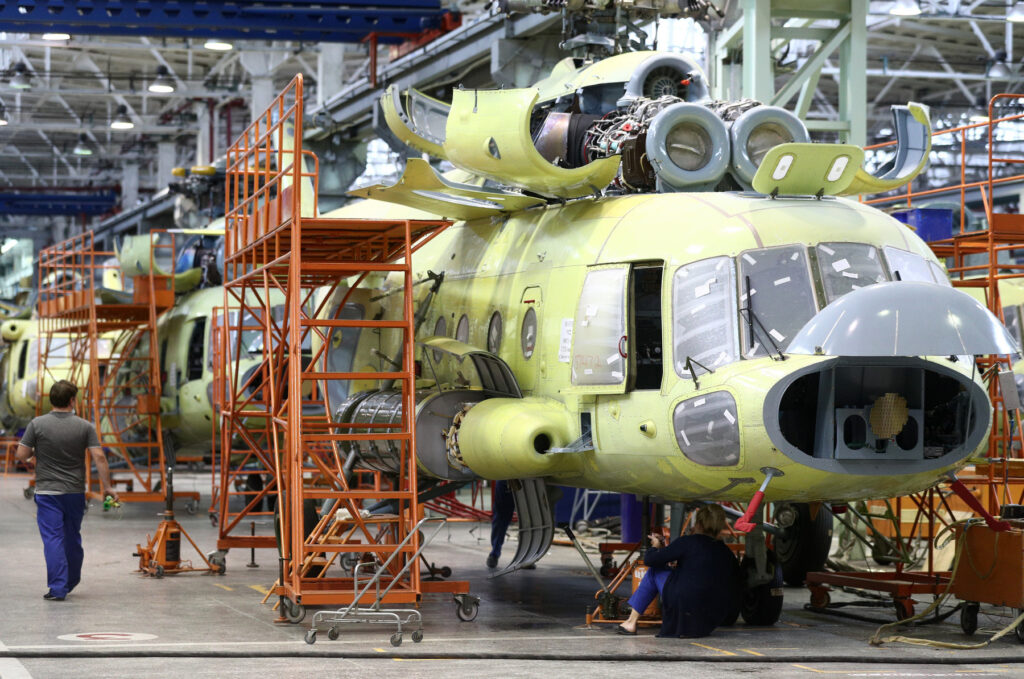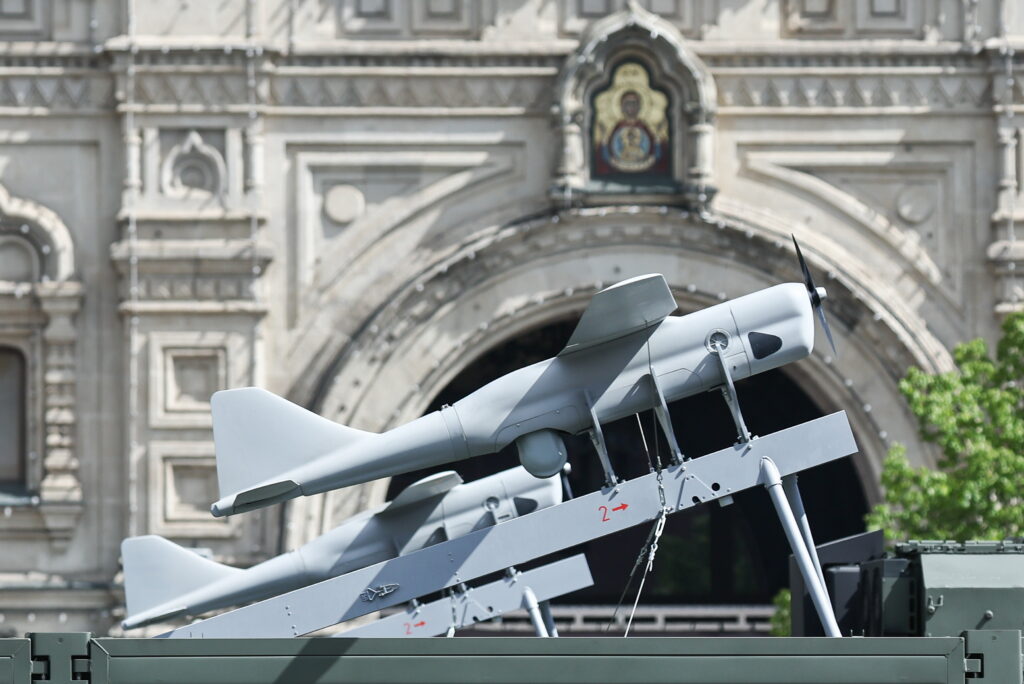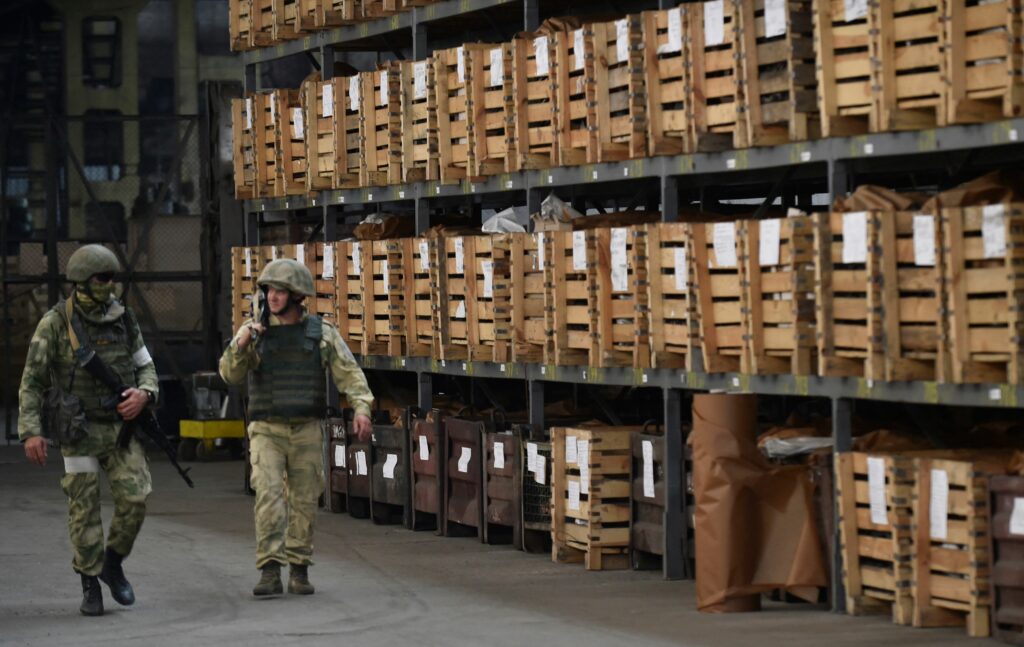The experience of living under sanctions since 2014 has proven painful for the Russian authorities. Moscow already faced such measures in the 1990s and 2000s. While they were much softer than the current sanctions, their impact was also perceptible. Today, however, the prevalent view among both experts and the broad public is that sanctions, a 20th-century invention, hardly ever achieved their goal; they always fail to budge the behaviour of the targeted countries.
These reflections miss one important aspect: when applied against specific countries, sanctions are not so much to force the violators to stop their actions as they are to mount their costs.
Looking back at the six years of the gradually tightening pressure of sanctions against Russia, we can draw two conclusions. Firstly, the main damage inflicted by Western sanctions on the Russian political system is on the defence industry. Secondly, personal sanctions have not caused a rift among the Russian ruling class. It is dubious that such an effect was ever seriously expected. Still, they have restricted access to European and American industrial assets, creating an instrument of pressure on people who stand a high chance of remaining in the ruling class even after Putin’s departure, no matter when and why this happens.
The past experience
Looking back, Russia first faced foreign sanctions in the 1990s (introduced by the U.S. at the time). In 1992, sanctions were imposed against Glavkosmos, a state-owned company meant to supply India with cryogenic rocket engines and related production technology. Washington saw this as a threat potentially leading to the proliferation of sensitive dual technology but offered both a stick and a carrot: one of the conditions for Russia to join the International Space Station project was to not transfer cryogenic rocket engines to India. By 1995, Russia revised its terms of cooperation with India and joined the Missile Technology Control Regime (MTCR).
Later on, in 1998–1999, several research institutes, defence industry plants, commercial companies and universities became the targets of sanctions following the suspicion that they had aided Iran in its missile and nuclear programme. Among them were Glavkosmos, the ‘Voenmeh’ Baltic State Technical University, the Moscow Aviation Institute, the Mendeleev University of Chemical Technology of Russia, and the Power Engineering Research and Design Institute (NIKIET, now part of Rosatom). American legal entities were prohibited from cooperating with these organisations.
In the 2000s, restrictions against most entities included in this list were lifted. Some Russian defence enterprises, including even Rosoboronexport, were still occasionally placed under sanctions, usually for two or three years. Universities were affected by the sanctions for the longest time. Restrictions against them were not withdrawn until 2010. This situation limited their cooperation with American universities and companies and purchases of U.S.-made scientific equipment. However, in the eyes of the world, all this seemed like a few annoying cases in Russian-American relations. It did not inflict any serious damage to the Russian authorities directly. The problems with reputation were blamed on the hardships of post-Soviet transformation.
In Moscow itself, these sanctions were perceived rather as a ‘stylistic trick’ of American diplomacy. The Kremlin relied on how the Americans were sending distinct signals in more key issues. This was the case during and shortly after the Russian-Georgian war in 2008. Back then, the Russian leaders considered the entry of a group of NATO warships led by an American destroyer into the Black Sea as a serious issue. So the first Western sanctions in 2014 were perceived by the Russian authorities in the light of previous experience. Later on, Moscow began to realise the protracted nature of these sanctions and started adapting to them. Adaptation efforts turned out to be very difficult, if not impossible.
The price of the technological embargo
The American and European sanctions imposed on Russia in 2014–2020 following the annexation of the Crimea, the war in Eastern Ukraine, interference in the U.S. elections, two episodes of the application of chemical weapons, support for Bashar al-Assad and the Iranian missile programme, etc., can be subdivided into two main groups. The first group comprises sectoral sanctions against banks, the oil and gas industry and the defence industry. The second group consists of personal sanctions.
Russian state-owned banks earn their revenues mainly within Russia. So they are generally able to operate without foreign loans or investors, even under a sanctions regime. Moreover, they continue to have access to the global financial system. As for oil and gas companies, which now have limited access to production technologies at offshore and shale gas deposits, they do not need these technologies for the time being. The price trends in recent years spare high tech exploration forays in any case. Thus, the current format of sanctions limits Russia’s opportunities and influences in the outside world. Yet it is not threatening the Kremlin in a way that would knock the balance in the political and economic system.
However, the Russian authorities are bearing much higher costs of sanctions in the defence sector. For example, the Russian ‘import substitution policy’ is a euphemism to describe life under the Western embargo on the supply of defence technologies, military equipment and dual-use products. This has cast a blow to the country’s capabilities in the production of high-tech weapons and military equipment and in manufacturing civilian products.
For example, the ongoing restrictions have impeded the modernisation of the GLONASS satellite navigation system and other space systems. They have driven organisational and financial costs associated with equipping the armed forces with communications equipment. They have also elevated the costs that Russia must bear to develop the MS-21 civil aircraft, like those associated with attempts to get the necessary technology by circumventing the sanctions. Various measures have been taken in this respect: supplies from Asian manufacturers (China, Malaysia, Taiwan, etc.), industrial espionage, procurement through shell companies and smuggling. It is difficult to estimate the total cost of import substitution to date. But the Russian government spent 1.6 trillion roubles (over USD 25 billion) on import substitution programmes in 2015–2018 alone.
The Western sanctions have inflicted the greatest damage on the Russian aviation and space industry. Manufacturers of communication and control systems are hard hit too. In particular, the United Aircraft Corporation (which became part of Rostech in 2019–2020), the KRET corporation, Roselektronika and NPO High Precision Weapons (part of Rostech) and, of course, Roskosmos insofar as satellite production is concerned. Sanctions have been less acute for manufacturers of air defence and missile defence systems (Almaz-Antey and RTI). Imported components here have traditionally not been used in their electronic ‘guts’. Besides, the entire Russian defence industry has lost access to European and American industrial equipment. Although this has not yet had a major impact, the issue will become more pressing as machines and production lines purchased in the 2000s begin to age. Manufacturers of Russian analogues also rely on various imported components that are still accessible for them.
The political effect of the technology embargo
Under these circumstances, the Kremlin has to devote more effort to maintaining the socio-economic and political balance in the country. In fact, the country’s defence industry is one of the key pillars for the Russian authorities while being economically unprofitable. Having received about USD 280 billion in 2011–2019 from Russian military purchases alone and over USD 134 billion from arms exports (by the end of 2020, these figures will grow to approx. USD 300 billion and 150 billion respectively), the defence industry has not been able to improve its performance. Another economic downturn and the devaluation of the rouble are only exacerbating this situation (other things being equal), not to mention the fact that the pressure of Western sanctions is unlikely to soften up in the foreseeable future. On the contrary, it may get even worse. All this despite how sanctions forced Russia to convert some of its arms exports into roubles (e.g. in supplies to India) and to allocate billions in credit to foreign countries wishing to buy Russian weapons (as in supplies to Turkey).
In other words, the isolation of the Russian defence industry from Western production and technology chains has further undermined its sustainability. This means the political significance and political consequences of the economic hardships within the country have exacerbated. Besides direct spending, the Kremlin will have to continue to redistribute the burden of the military industry among the key players in the system: defence corporations, state-owned banks and formally private companies that are linked to the Kremlin (e.g. RTI, Transmashholding or Basic Element).
On top of this, the Russian defence industry has become much more inaccessible, not only to independent civil expertise but also to the government experts. One example is the story of Deputy Prime Minister Yury Borisov, who, in 2019, publicly disclosed the problem of bad debts accumulated in 2017–2018 by defence companies, exceeding USD 10 billion at the then average annual exchange rate. After this disclosure, it was no longer possible to solve this problem behind closed doors. Moreover, the Russian authorities have been struggling to resolve the insoluble organisational contradiction: how to make the defence industry flexible and viable while keeping all the control levers in their hands.
In this situation, the costs of disagreements between people involved in these processes have been rising. This can be clearly tracked through the conflict that broke out in the spring of 2020 between the two long-time companions of Sergei Chemezov (head of Rostec): Mikhail Silkov and Mikhail Voevodin, after criminal proceedings were initiated against the latter. To balance the defence sector, the Kremlin decided a long time ago to embark on the path of tighter economic policy and tighter relations within the ruling class. It will not be able to step off this path without internal political turmoil.










